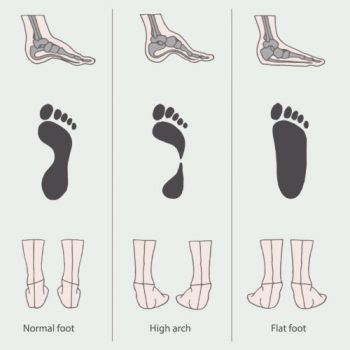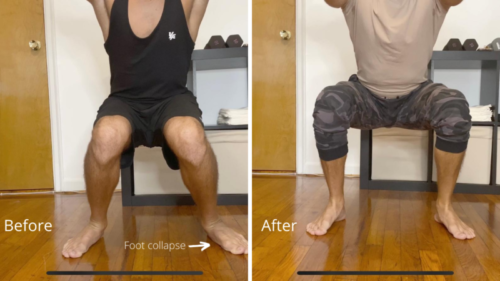What is flat feet (pes planus)?

Flexible vs. Rigid Flat Foot
What are the causes?
What is ankle dorsiflexion and how can it cause flat feet?
Dorsiflexion is when you lift your forefoot towards your shin, or when your shin comes down towards and past your toes like when squatting. You need ankle dorsiflexion when you walk, go up and down the stairs, squat, and lunge. So as you can see, you go into dorsiflexion a lot throughout your day.
Now, you might say that you can do all these activities without any problems so you must have a good amount of dorsiflexion. However, our bodies are very good at compensating. Our body will do whatever it has to to get you down those flight of stairs. Remember, movement takes place along the path of least resistance. And this is usually the area where you will have the most pressure and stress; in this case your arch. This means that due to your stiff ankles, your arch that is not as stiff will have to collapse in order to allow your knees to go past your toes when going down the stairs or when you’re squatting. Now imagine you’re doing this throughout your entire day. This will cause the arch to fall.


Great tips! Much needed. Thanks, Ella!
Thank you! Hope it was helpful!
I have flat feet, and I absolutely hate it. I’m almost certain I have a rigid flat foot. I’m going to try some of these exercises to see if they help. Wish me luck 😩
Hopefully it helps! Good luck!
My daughter has flat feet and I feel so bad for her. I’ll share this article with her. Thanks for sharing.
Hope this helps her out!
These are super helpful! Thanks for sharing <3
These are very helpful information. Thanks for sharing.
When you have e flat feet so you automatically click
Hope you found this post helpful!
Great tips. Thanks for sharing.
quite helpful thanks for sharing